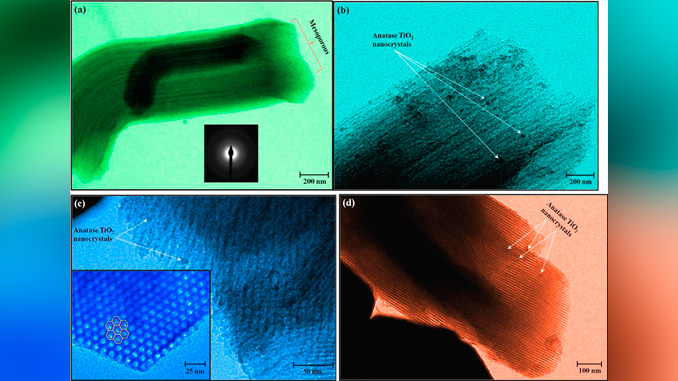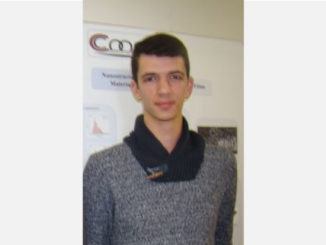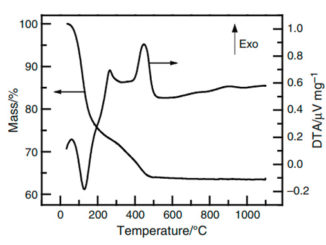
Writers: M.M. Araújo and L.K.R. Silva and J.C. Sczancoski and M.O. Orlandi and E. Longo and A.G.D. Santos and J.L.S. Sá and R.S. Santos and G.E. Luz Jr. and L.S. Cavalcante
Keywords: SBA-15 mesopores; TiO2 nanocrystals; Infrared; Growth mechanism; Optical band gap
Abstract: In this paper, a new synthesis method was proposed to obtain anatase titanium oxide (TiO2) nanocrystals anchored into SBA-15 molecular sieve, as a matrix assigned by the in-situ anchoring (ISA) method. Pure SBA-15 and modified with TiO2 nanocrystals at different Si/Ti molar ratios (R = 75, 50, and 25) were structurally characterized by X-ray diffraction (XRD), Micro-Raman and Fourier Transform infrared (FTIR) spectroscopies. Specific surface area, pore volume and average pore diameter were estimated using both Brunauer-Emmett-Teller (BET) and Barrett-Joyner-Halenda (BJH) methods, respectively. Morphological aspects of these samples were observed by means of field emission scanning electron microscopy (FE-SEM) and transmission electron microscopy (TEM). Optical properties were investigated by ultraviolet-visible (UV-vis) diffuse reflectance spectroscopy. XRD patterns, Micro-Raman and FT-IR spectra indicate the TiO2 nanocrystals crystallized in a tetragonal structure anchored into the SBA-15 mesopores. BET and BJH methods prove a large amount of TiO2 nanocrystals were anchored inside of SBA-15 mesopores due to increase in surface area and average pore size of SBA-15 matrix. FE-SEM and TEM images showed the pure SBA-15 has an elongated hexagon-shaped microstructure, and an average size of 7.34 nm for 2D hexagonal mesopores. Moreover, ISA method was able to avoid blocking of mesopores, in addition promotes a significant increasing the impregnation rate of anatase TiO2nanocrystals in SBA-15 matrix. A growth mechanism was proposed in order to explain the stages involved in the formation of TiO2-SBA mesoporous. UV–vis spectra revealed a dependence of the optical band gap energy (Egap) with the decreasing of Si/Ti molar ratios.




